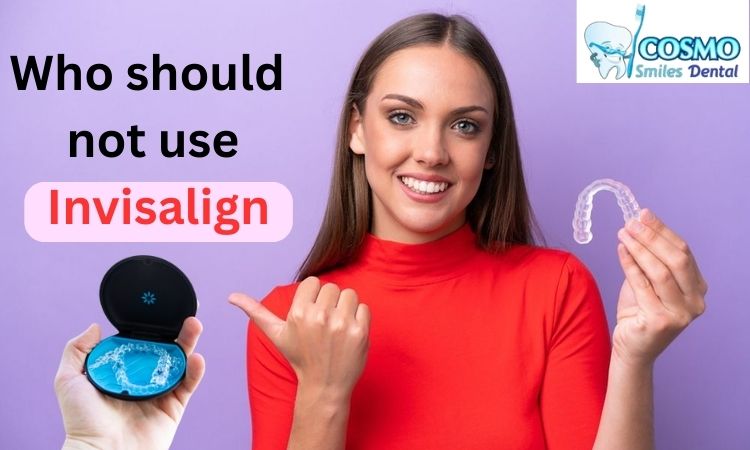Invisible braces, like Invisalign, have made orthodontic treatment more accessible and appealing for many. These clear aligners offer a discreet way to straighten teeth, making them an excellent choice for those wanting to avoid metal braces. However, while Invisalign works for a wide range of dental issues, it’s not suitable for everyone. Recognizing the limitations can help you decide if this treatment works for your smile.
Who Are Invisible Braces Ideal For?
Before discussing who cannot use Invisalign, it’s essential to understand who these aligners are designed for. Most adults and teens with mild to moderate dental misalignments are likely candidates. Common issues that are effectively treated with Invisalign include:
- Crowded teeth
- Gaps between teeth
- Minor bite problems like overbite, underbite, or crossbite
These aligners excel at handling straightforward cases that don’t require major adjustments to jaw structure or teeth position.
Looking for Invisalign Braces in Arlington VA? Cosmo Smiles Dental experienced team is ready to guide you through every step of the journey toward a healthier, straighter smile.
Dental Conditions That May Not Qualify for Invisalign
Although invisible braces are versatile, there are situations where they may not be the right choice. Below are some cases where Invisalign might not be recommended:
1. Severely Misaligned Teeth
Patients with significant crowding or extreme spacing issues may need traditional braces. While Invisalign can adjust teeth within a certain range, severe cases often require the robust corrective force of metal or ceramic braces.
2. Complex Bite Problems
Invisible braces are effective for minor bite issues like moderate overbites or underbites. However, for severe cases of malocclusion, jaw misalignment, or open bites, other orthodontic treatments might be better suited. Traditional braces or other advanced options may provide the consistent force necessary for complex corrections.
3. Weakened Teeth or Gum Issues
People with periodontal disease or weak teeth may not benefit from Invisalign. Aligners can intensify existing dental concerns. It’s crucial for patients to have healthy gums and stable teeth before starting any orthodontic treatment.
4. Patients with Dental Restorations
The accuracy of Invisalign could be impacted by the presence of dental crowns, veneers, or bridges. Since the aligners rely on tooth movement, pre-existing restorations might complicate or limit the process.
5. Unwillingness to Follow Instructions
Effective Invisalign treatment relies significantly on the consistent use of aligners for 20 to 22 hours each day. If a patient is unwilling or unable to stick to this schedule, the results could be compromised. Younger patients or those who find it challenging to commit to this routine might not find Invisalign suitable.
6. Misaligned Jaw Structure
Issues involving the jawbone rather than just teeth alignment usually require more intensive interventions. Surgical options or specialized orthodontic treatments might be necessary to correct such problems.

Alternatives to Invisible Braces
For individuals who fall into the categories above, other orthodontic options may work better. Traditional metal braces, lingual braces, or even surgical interventions may provide effective solutions. Consulting an experienced orthodontist can help you determine the best course of action tailored to your dental needs.
Things to Discuss with Your Orthodontist
If you’re considering Invisalign, here are some key points to discuss during your consultation:
- Your dental history and any past orthodontic treatments
- Concerns about commitment to wearing aligners
- Underlying gum health or other dental conditions that might affect treatment
Your orthodontist will assess your teeth and bite issues to recommend the best treatment plan.
Not Sure if You’re a Candidate for Invisible Braces?
Invisible braces offer a discreet and convenient solution for many orthodontic issues. However, they’re not suitable for everyone. At Cosmo Smiles Dental, we provide comprehensive evaluations to determine the best treatment approach for your unique dental needs.
If you’re exploring options for Invisalign Braces, schedule a consultation with our experienced team today. Let us guide you toward achieving the smile you’ve always desired.
Book your smile assessment now and find out if invisible braces are the right fit for you — comfort, confidence, and clarity start here.
FAQs
1. Can Invisalign treat overcrowding?
Invisalign can help correct mild to moderate overcrowding by gradually creating space and aligning teeth. Severe cases might require extra steps, like extractions, before beginning treatment.
2. Is it painful to wear Invisalign?
Invisible braces are generally more comfortable than traditional ones. You may feel some pressure or mild discomfort initially as your teeth begin to shift, but this usually subsides within a few days.
3. How long does Invisalign take to straighten teeth?
The treatment duration varies depending on the severity of the issue but typically ranges from 12 to 18 months.
4. Are there age limits for using Invisalign?
While Invisalign works well for teens and adults, younger children with developing teeth may need alternative treatments.
